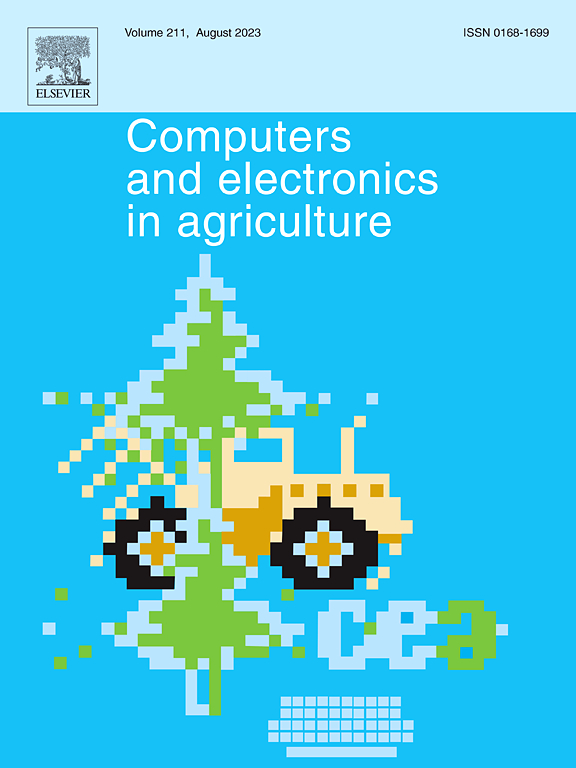Alfalfa detection and stem count from proximal images using a combination of deep neural networks and machine learning
IF 7.7
1区 农林科学
Q1 AGRICULTURE, MULTIDISCIPLINARY
引用次数: 0
Abstract
Among various types of forages, Alfalfa (Medicago sativa) is a crucial forage crop that plays a vital role in livestock nutrition and sustainable agriculture. As a result of its ability to adapt to different weather conditions and its high nitrogen fixation capability, this crop produces high-quality forage that contains between 15 and 22 % protein. It is fortunately possible to improve the overall prediction of forage biomass and quality prior to harvest through remote sensing technologies. The recent advent of deep Convolution Neural Networks (deep CNNs) enables researchers to utilize these incredible algorithms. This study aims to build a model to count the number of alfalfa stems from proximal images. To this end, we first utilized a deep CNN encoder-decoder to segment alfalfa and other background objects in a field, such as soil and grass. Subsequently, we employed the alfalfa cover fractions derived from the proximal images to develop and train machine learning regression models for estimating the stem count in the images. This study uses many proximal images taken from significant number of fields in four provinces of Canada over three consecutive years. A combination of real and synthetic images has been utilized to feed the deep neural network encoder-decoder. This study gathered roughly 3447 alfalfa images, 5332 grass images, and 9241 background images for training the encoder-decoder model. With data augmentation, we prepared about 60,000 annotated images of alfalfa fields containing alfalfa, grass, and background utilizing a pre-trained model in less than an hour. Several convolutional neural network encoder-decoder models have also been utilized in this study. Simple U-Net, Attention U-Net (Att U-Net), and ResU-Net with attention gates have been trained to detect alfalfa and differentiate it from other objects. The best Intersections over Union (IoU) for simple U-Net classes were 0.98, 0.93, and 0.80 for background, alfalfa and grass, respectively. Simple U-Net with synthetic data provides a promising result over unseen real images and requires an RGB iPad image for field-specific alfalfa detection. It was also observed that simple U-Net has slightly better accuracy than attention U-Net and attention ResU-Net. Finally, we built regression models between the alfalfa cover fraction in the original images taken by iPad, and the mean alfalfa stems per square foot. Random forest (RF), Support Vector Regression (SVR), and Extreme Gradient Boosting (XGB) methods have been utilized to estimate the number of stems in the images. RF was the best model for estimating the number of alfalfa stems relative to other machine learning algorithms, with a coefficient of determination (R2) of 0.82, root-mean-square error of 13.00, and mean absolute error of 10.07.
求助全文
约1分钟内获得全文
求助全文
来源期刊

Computers and Electronics in Agriculture
工程技术-计算机:跨学科应用
CiteScore
15.30
自引率
14.50%
发文量
800
审稿时长
62 days
期刊介绍:
Computers and Electronics in Agriculture provides international coverage of advancements in computer hardware, software, electronic instrumentation, and control systems applied to agricultural challenges. Encompassing agronomy, horticulture, forestry, aquaculture, and animal farming, the journal publishes original papers, reviews, and applications notes. It explores the use of computers and electronics in plant or animal agricultural production, covering topics like agricultural soils, water, pests, controlled environments, and waste. The scope extends to on-farm post-harvest operations and relevant technologies, including artificial intelligence, sensors, machine vision, robotics, networking, and simulation modeling. Its companion journal, Smart Agricultural Technology, continues the focus on smart applications in production agriculture.
 求助内容:
求助内容: 应助结果提醒方式:
应助结果提醒方式:


